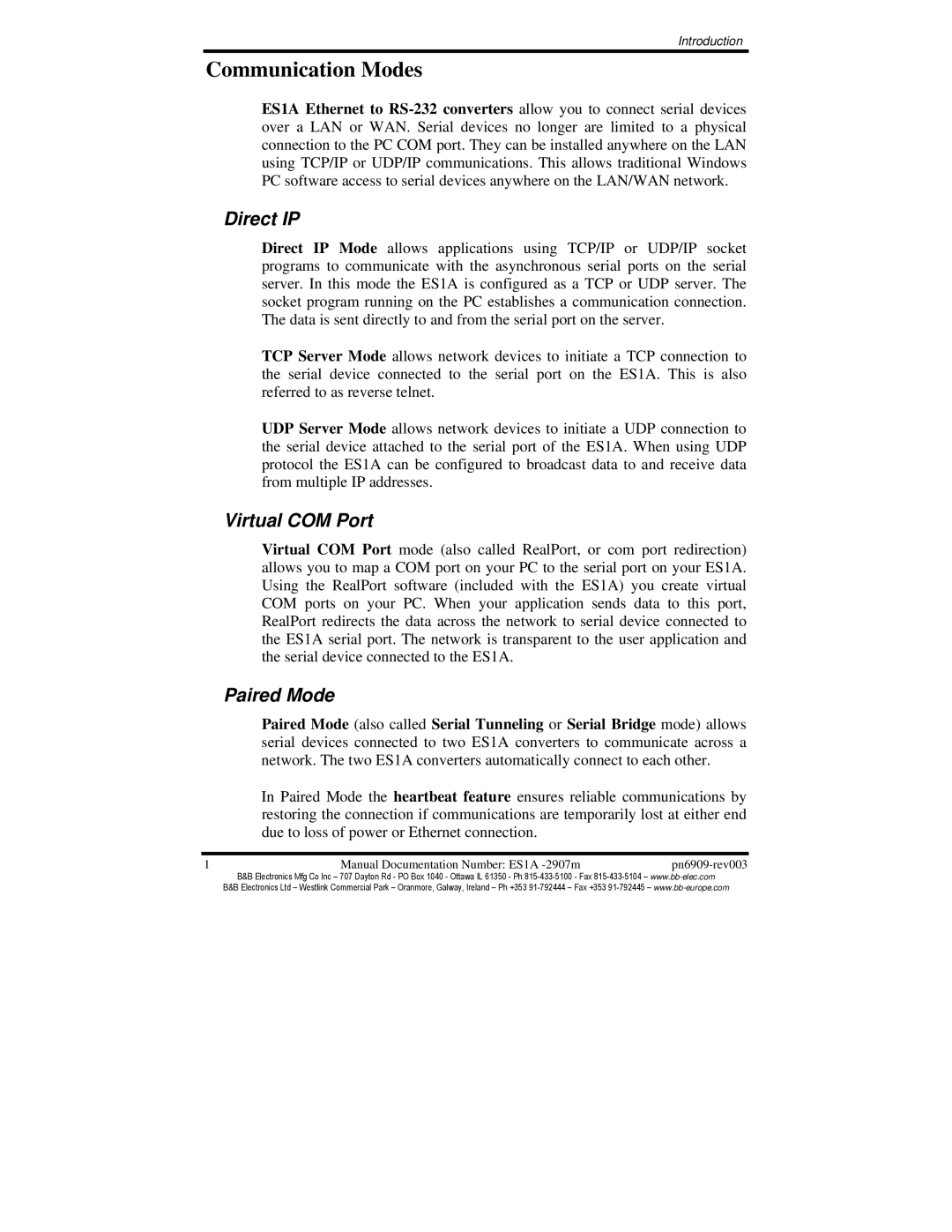
Introduction
Communication Modes
ES1A Ethernet to
Direct IP
Direct IP Mode allows applications using TCP/IP or UDP/IP socket programs to communicate with the asynchronous serial ports on the serial server. In this mode the ES1A is configured as a TCP or UDP server. The socket program running on the PC establishes a communication connection. The data is sent directly to and from the serial port on the server.
TCP Server Mode allows network devices to initiate a TCP connection to the serial device connected to the serial port on the ES1A. This is also referred to as reverse telnet.
UDP Server Mode allows network devices to initiate a UDP connection to the serial device attached to the serial port of the ES1A. When using UDP protocol the ES1A can be configured to broadcast data to and receive data from multiple IP addresses.
Virtual COM Port
Virtual COM Port mode (also called RealPort, or com port redirection) allows you to map a COM port on your PC to the serial port on your ES1A. Using the RealPort software (included with the ES1A) you create virtual COM ports on your PC. When your application sends data to this port, RealPort redirects the data across the network to serial device connected to the ES1A serial port. The network is transparent to the user application and the serial device connected to the ES1A.
Paired Mode
Paired Mode (also called Serial Tunneling or Serial Bridge mode) allows serial devices connected to two ES1A converters to communicate across a network. The two ES1A converters automatically connect to each other.
In Paired Mode the heartbeat feature ensures reliable communications by restoring the connection if communications are temporarily lost at either end due to loss of power or Ethernet connection.
1Manual Documentation Number: ES1A
B&B Electronics Mfg Co Inc – 707 Dayton Rd - PO Box 1040 - Ottawa IL 61350 - Ph
B&B Electronics Ltd – Westlink Commercial Park – Oranmore, Galway, Ireland – Ph +353
